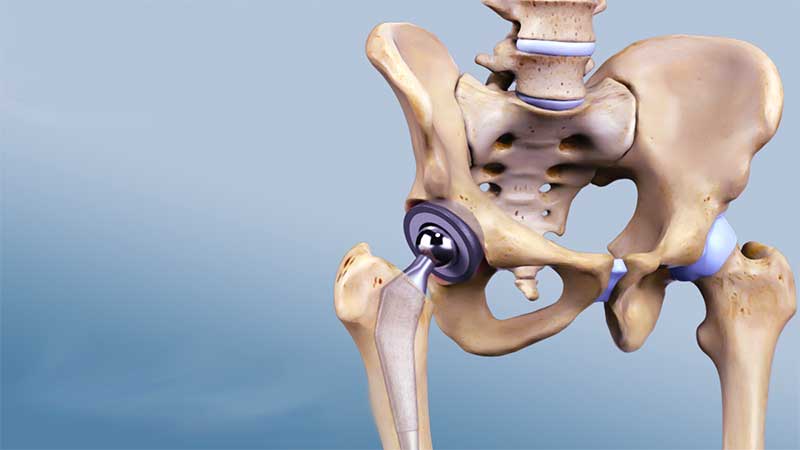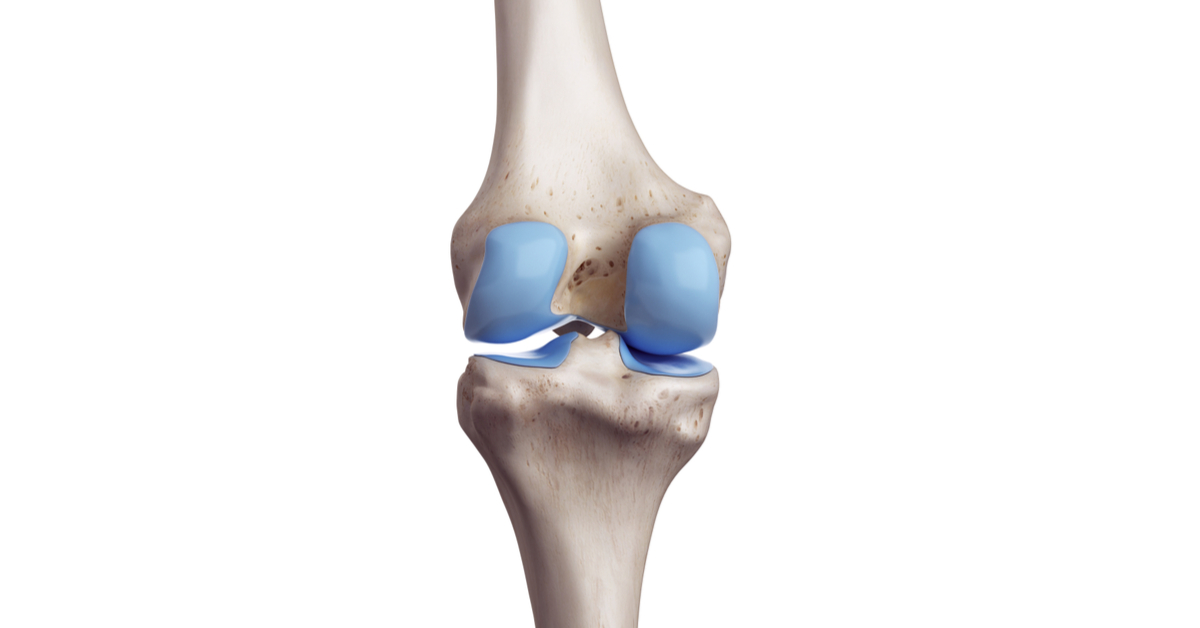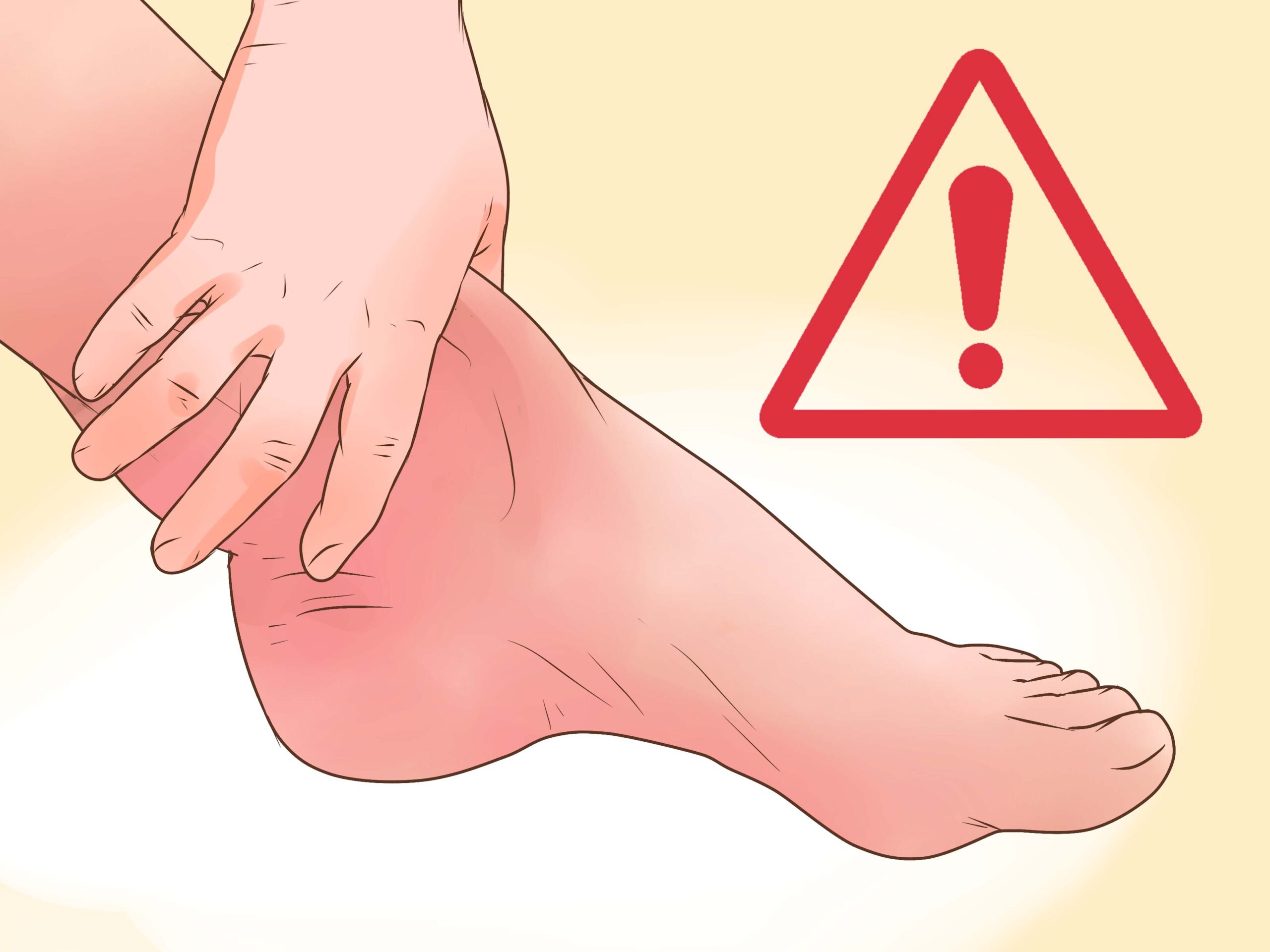What is a Shoulder Fracture, and How Long Does Its Treatment Take?
Shoulder Fracture
A shoulder fracture is a medical condition that occurs when one of the bones in the shoulder breaks. It can result from accidents such as a strong fall on the shoulder, a forceful blow to the shoulder, or a sports injury. The fracture can affect any of the shoulder bones, including the clavicle (collarbone), humerus (upper arm bone), or scapula (shoulder blade). Individuals with a shoulder fracture experience severe pain in the affected shoulder and may have difficulty moving the injured shoulder, along with an increase in temperature.
Symptoms of a Shoulder Fracture
- Severe Pain: One of the prominent symptoms of a shoulder fracture is severe and sharp pain in the affected area. The pain is constant and intensifies when attempting to move the shoulder.
- Difficulty in Shoulder Movement: Those with a shoulder fracture have difficulty moving the injured shoulder. They may feel incapable of lifting or moving the affected arm freely.
- Redness and Swelling: A fracture can lead to redness and swelling in the affected area. Swelling may be accompanied by warmth and inflammation in the shoulder.
- Alteration in Shoulder Shape: In some cases of severe fractures, there may be a change in the shape of the injured shoulder, such as a hunched appearance or the presence of overlapping bones.
A diagnosis of a shoulder fracture is usually made through a clinical examination of the injured shoulder, followed by X-ray imaging to confirm the fracture’s presence. Some cases may require clinical studies such as magnetic resonance imaging (MRI) to assess the extent of tissue damage.
Treatment of a Shoulder Fracture
The treatment of a shoulder fracture depends on the type and severity of the fracture. In cases of minor fractures, temporary splinting or bracing may suffice to immobilize the shoulder and allow healing, which may take several weeks. However, in severe fractures involving bone shattering or displacement, surgical intervention may be necessary to realign and secure the bones using screws, plates, or other hardware. Recovery after surgery can vary but often involves several weeks to months of rehabilitation and physical therapy.
Regardless of the treatment method, rehabilitation is an essential part of the healing process. Physical therapy helps improve shoulder strength, mobility, and function. The duration of rehabilitation varies but typically lasts several weeks to months.
The specific timeline for the treatment of a shoulder fracture should be discussed with a healthcare provider, as it depends on individual circumstances and the chosen treatment plan. Patients are usually monitored through follow-up appointments and imaging to ensure proper healing.
Preventing Shoulder Fractures
To prevent shoulder fractures, it is recommended to follow these guidelines:
- Avoid risks that lead to falls on the shoulder, such as slipping on wet surfaces or climbing without using proper safety equipment.
- Wear protective gear in sports activities that pose a risk to the shoulder.
- Maintain shoulder muscle strength and flexibility through regular strength and stretching exercises.
- Avoid overexertion of the shoulder and use proper techniques when lifting heavy weights.
Do not hesitate to consult your doctor if you experience symptoms similar to a shoulder fracture for a proper diagnosis and treatment.
How Long Does it Take to Treat a Shoulder Fracture?
A shoulder fracture is a painful injury that may require a significant amount of time for complete recovery. The duration of recovery varies among individuals and is influenced by various factors, such as the type and severity of the fracture, the individual’s medical history, and their overall health. However, in general, the expected recovery period for a shoulder fracture is approximately 6-12 weeks.
Several factors contribute to the necessary duration for a full shoulder recovery:
- Type of Fracture: There is a wide range of shoulder fracture types, from simple fractures like cracks to complex fractures that require surgical intervention. Recovery from a simple fracture typically takes less time compared to a complex fracture.
- Age: Younger individuals tend to recover faster than older individuals. They typically have better muscle strength and physical fitness, which facilitates and speeds up the recovery process.
- Compliance with Treatment and Rehabilitation: Adherence to a treatment and rehabilitation program is crucial for recovery duration. Patients are usually advised to undergo physical therapy sessions to strengthen the muscles surrounding the shoulder and regain its natural range of motion.
- Other Health Issues: The presence of other health problems, such as circulatory or clotting disorders, may affect the recovery process and cause delays.
Additionally, both short-term and long-term post-treatment recovery periods should be determined. Patients may require additional rest and rehabilitation after leaving the hospital. It is essential for the patient to strictly follow the treating physician’s guidance and maintain continuous communication for progress reports.
In conclusion, the recovery period for a shoulder fracture varies from person to person and depends on several factors. Patients should be patient and consistently follow the recommended treatment and rehabilitation program to ensure a full recovery of shoulder health and function.
Can a Shoulder Fracture Be Treated?
Whether a shoulder fracture can be treated depends on the type and severity of the fracture. However, in most cases, treatment, either surgical or non-surgical, is required. It is essential to consult a specialist to determine the most suitable treatment for your specific case.
To begin with, the fracture needs to be diagnosed. A comprehensive examination of the fractured area and the shoulder, in general, will be conducted by the doctor. The doctor may also request an X-ray to assess the extent of the fracture’s severity and identify potential damage to surrounding shoulder tissues.
If a Shoulder Fracture Is Confirmed, the Doctor May Recommend the Following Treatment Options:
- Temporary Immobilization: In some cases, the doctor may temporarily immobilize the fracture using a cast or another stabilization device to limit shoulder movement and facilitate the healing process. This procedure allows the fracture to gradually improve.
- Surgical Treatment: In severe cases, the fracture may be so significant that surgical intervention is the optimal choice. This involves open surgery to stabilize the fracture using screws or metal plates to secure the bones in their correct positions and promote healing.
- Physical Therapy: After surgical treatment or temporary immobilization, the doctor may recommend physical therapy sessions to aid in regaining shoulder movement and strengthening the surrounding muscles. These sessions will include range of motion exercises, tissue massage, and gradual muscle strengthening.
- Rest and Self-Care: In addition to medical treatment, rest and self-care can be essential in the recovery process. The injured individual should refrain from activities that may increase pressure or strain on the affected shoulder, ensure a nutritious diet, and get adequate rest and sleep.
Studies indicate that the recovery period for a shoulder fracture can vary among individuals and is influenced by factors such as the severity of the fracture, the individual’s health, and their age. Some people may take several months to regain full shoulder mobility after a fracture, while others may require a shorter recovery period.
In general, the injured individual should strictly follow the doctor’s instructions and avoid rushing to resume daily activities or exercise before receiving approval from the doctor. It is also essential to exercise caution to prevent re-injury in the future by wearing shoulder protectors or taking other preventive measures.
However, in each case, the injured person should consult a specialist to determine the best treatment plan.
Is a Shoulder Fracture Serious?
The shoulder is one of the most mobile joints in the body, making it susceptible to various stresses and strains in daily life. One of the problems that can occur in the shoulder is a shoulder fracture, which can result from various causes. Is a shoulder fracture serious, and what are the symptoms that may indicate its occurrence? Learn the details in this article.
Symptoms of a Shoulder Fracture
Several symptoms may appear if you have a shoulder fracture. Among the prominent signs and symptoms of a shoulder fracture are:
- Severe Pain: A person may experience severe and intense pain in the affected shoulder area. The pain may become more severe when trying to use or move the injured arm.
- Swelling and Redness: Pain may be accompanied by swelling and redness in the affected area.
- Difficulty in Movement: Difficulty in moving the injured arm fully may be experienced, as movement becomes painful and restricted.
- Deformity in the Shoulder: In some severe cases, a shoulder fracture may cause a noticeable deformity in the shape or position of the shoulder.
- Decreased Sensation in the Hands: If a nerve near the fracture area is injured, the person may notice a decrease in sensation in the fingers and hand involved.
Is a Shoulder Fracture Serious?
Yes, a shoulder fracture is considered a serious injury that requires immediate attention from specialized doctors. The importance of prompt and appropriate management of a shoulder fracture is highlighted to preserve the health and function of the shoulder. This is because of the following reasons:
- Potential Impact on Mobility: A shoulder fracture significantly affects the movement of the injured arm. The patient may experience difficulty in moving the arm or abnormal orientations of the shoulder, negatively impacting their quality of life.
- Nerve and Blood Vessel Damage: A shoulder fracture can lead to injury to the nerves or blood vessels in the vicinity, affecting the arm’s sensation and blood supply. This increases the severity of the injury.
- Impact on Balance and Self-Confidence: Due to the difficulty in moving the injured arm, balance and the ability to perform daily activities can be significantly affected. These effects can lead to decreased self-confidence and a sense of weakness.
What About Treatment?
Serious shoulder injuries require direct treatment by specialized doctors. Treatment typically involves restoring the bones to their natural positions and stabilizing them using surgical techniques. Following this, a comprehensive treatment plan is put in place, including physical therapy and rehabilitation to regain shoulder movement and strength.
Minor shoulder injuries may be treatable by wearing a supportive brace or utilizing healing stimulation techniques such as ultrasound therapy. However, consultation with a specialized doctor should precede any treatment approach.
Preventing Shoulder Fractures
While not all shoulder fractures can be avoided, there are steps you can take to reduce the risk of injury, such as:
- Wearing Appropriate Protective Gear: Use suitable protective equipment when engaging in sports or activities that expose the shoulder to stress and impacts.
- Strengthening Shoulder Muscles: Strengthen the muscles surrounding the shoulder by performing exercises targeted at those muscles.
- Avoiding Falls and Excessive Strain: Stay clear of situations that may lead to falls and avoid overexerting the shoulder.
- Maintaining a Healthy Weight: Maintain a healthy and balanced weight to reduce excessive pressure on the joints.
In conclusion, anyone experiencing shoulder pain or suspecting a shoulder fracture should contact a doctor immediately for proper diagnosis and treatment. Prompt attention to the shoulder and early treatment contribute to avoiding complications and improving treatment outcomes.
How Does a Shoulder Fracture Occur?
A shoulder fracture is a medical condition that affects the shoulder bone and is a common injury that can affect people of all ages. Fractures can occur due to direct and strong impact on the shoulder, such as a fall or a powerful collision, or it may result from a significant force on the arm or shoulder.
When a shoulder fracture occurs, the severity of the injury and the type of fracture can lead to varying levels of pain and associated symptoms. Common symptoms of a shoulder fracture may include the following:
- Severe Pain: Pain is one of the most prominent symptoms of a shoulder fracture. The patient may experience severe pain in the area of the fracture, which can intensify when attempting to move or use the injured arm.
- Swelling and Bruising: Swelling and bruising may occur in the affected area due to the accumulation of excess fluid and blood.
- Difficulty in Shoulder Movement: Those with a shoulder fracture may have difficulty moving the shoulder and arm, making it challenging to lift or move the arm naturally.
- Deformity in the Shoulder: In some cases, there may be a deformity in the normal shape of the shoulder, causing it to appear misaligned or irregular.
- Cracking Sound: In rare cases, a shoulder fracture may produce a distinctive cracking sound.
Diagnosing a Shoulder Fracture
To diagnose a shoulder fracture, the injured person should promptly consult a specialized doctor. The doctor will conduct a clinical examination to assess the symptoms and examine the patient’s overall condition. X-ray imaging, such as X-rays, may be required to confirm the diagnosis and evaluate the severity of the fracture.
The recovery period for a shoulder fracture varies depending on the severity of the fracture, the patient’s age, and their condition. In cases of simple and non-chronic fractures, recovery may take between 6 to 8 weeks. However, for complex fractures or those accompanied by significant damage to surrounding tissues, recovery may take a longer period, extending to several months.
Here are some tips and guidelines for preventing shoulder fractures:
- Avoid Strong and Sudden Force on the Shoulder: Avoid strong and sudden movements or actions involving the shoulder, and maintain proper arm alignment during sports or daily activities.
- Wear Appropriate Protective Gear: Wear suitable protective equipment, especially during vigorous sports activities that may increase the risk of a shoulder fracture.
- Strengthen Shoulder and Arm Muscles: Strengthen the muscles of the shoulder and arm by practicing exercises aimed at strengthening this area.
- Regularly Consult a Specialized Doctor: Regularly consult a specialized doctor to detect any problems or weaknesses in the shoulder early.
In conclusion, people should exercise caution when dealing with their shoulders and arms and avoid activities that could lead to shoulder injuries. If any symptoms indicative of a shoulder fracture occur, it is essential to seek medical attention for diagnosis and treatment to assist in recovery and restoring normal shoulder functions.
Do Bones Return to Their Original Strength After a Fracture?
After a bone fracture, the body undergoes a complex healing process to restore the original strength and functions of the affected bone. Do bones return to their original strength after a fracture? In this article, we will explore the stages that broken bones go through to heal and shed light on some misconceptions about the bone healing process.
The stages that broken bones go through until they heal:
- Inflammatory Stage: This stage begins immediately after the fracture occurs. Blood and other fluids rush to the fracture site, causing swelling and severe pain. Inflammatory cells are sent by the body to the fracture area to remove dead and foreign tissues. This stage lasts for several days.
- Reparative Stage: In this stage, new cartilage and tissues are formed around the fracture site to replace the damaged bone. These cartilage and new tissues are nourished by blood vessels and form a connection point for bone healing. This stage can last for several weeks.
- Remodeling Stage: In this stage, the body starts to rebuild and reshape the broken bone correctly. The body produces new cells to create clean and strong edges for the bone before resuming its normal activity. This process can take weeks to months, depending on the size of the fracture and individual factors.
After going through these stages, a person may need rehabilitation exercises to strengthen the muscles around the broken bone and regain full joint mobility. This process can be lengthy, extending for several months.
Misconceptions about bone fractures:
- Bones return stronger than before: This claim is not accurate. While bones heal and return to their natural functions, they may become less strong in the area where the fracture occurred. Broken bones can develop scars or minor deformities that may affect their strength.
- Pain means improper bone healing: In some cases, a person may experience some pain during the bone healing process. However, pain does not necessarily indicate an issue with bone healing. Pain may result from swelling or inflammation of the tissues surrounding the fracture. Consulting a doctor is necessary to assess the condition accurately.
- Fractures don’t cause severe pain: Although fractures may not always cause severe pain, they can be painful in general. A person may experience sharp pain in the fracture area, and it may gradually increase during the healing process.
In conclusion, the bone healing process is not straightforward and takes time. A person with a fracture should receive proper care and treatment to ensure that the bone heals correctly and regains its functions.
















